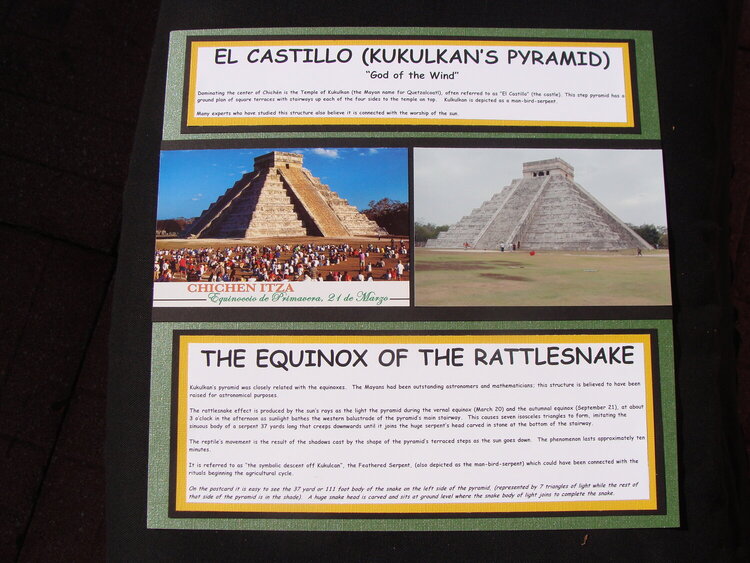

 Give a Cheer
Give a Cheer
EL CASTILLO (KUKULKAN'S PYRAMID)
“God of the Wind”
Dominating the center of Chichén is the Temple of Kukulkan (the Mayan name for Quetzalcoatl), often referred to as "El Castillo" (the castle). This step pyramid has a ground plan of square terraces with stairways up each of the four sides to the temple on top. Kulkulkan is depicted as a man-bird-serpent.
Many experts who have studied this structure also believe it is connected with the worship of the sun.
THE EQUINOX OF THE RATTLESNAKE
Kukulkan's pyramid was closely related with the equinoxes. The Mayans had been outstanding astronomers and mathematicians; this structure is believed to have been raised for astronomical purposes.
The rattlesnake effect is produced by the sun's rays as the light the pyramid during the vernal equinox (March 20) and the autumnal equinox (September 21), at about 3 o'clock in the afternoon as sunlight bathes the western balustrade of the pyramid's main stairway. This causes seven isosceles triangles to form, imitating the sinuous body of a serpent 37 yards long that creeps downwards until it joins the huge serpent's head carved in stone at the bottom of the stairway.
The reptile's movement is the result of the shadows cast by the shape of the pyramid's terraced steps as the sun goes down. The phenomenon lasts approximately ten minutes.
It is referred to as “the symbolic descent off Kukulcan”, the Feathered Serpent, (also depicted as the man-bird-serpent) which could have been connected with the rituals beginning the agricultural cycle.
On the postcard it is easy to see the 37 yard or 111 foot body of the snake on the left side of the pyramid, (represented by 7 triangles of light while the rest of that side of the pyramid is in the shade). A huge snake head is carved and sits at ground level where the snake body of light joins to complete the snake.
No products have been added to this project.
Thanks for spreading positivity!
May 24, 2011
May 10, 2011
May 08, 2011
May 07, 2011
May 03, 2011